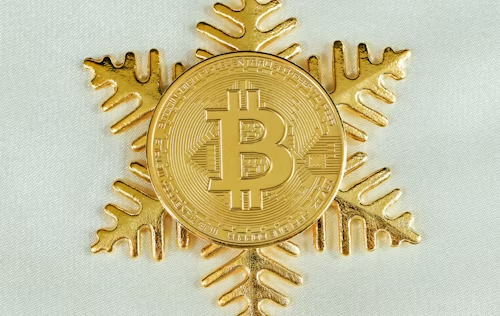
Projecting a CAGR of over 66.2%, fresh study on market trend analysis indicates that the worldwide blockchain market size is expected to create income of over $94 billion by the end of 2027.
Remember that good examples usually open the path for creativity and change; so, let us begin this blog with a real-world case. Using ERC-721 NFTs on the Ethereum blockchain, our team set out in a recent initiative to digitally fractionalize commercial assets, therefore enabling co-ownership.
We effectively developed a web-based platform that simplified client onboarding, property listings, and post-purchase operations administration. Enabled by an administrative panel generating ERC-721 tokens on the Polygon blockchain, consumers might commit to buying fractions of commercial real estate. As fractions were sold, an administrative wallet safely housed all tokens enabled transfers.
Working on this project let us apply blockchain integration to revitalize a legacy application. By using ERC-721 NFTs on Ethereum, the platform not only changed the real estate sector but also demonstrated the possibilities for blockchain to improve operational efficiency, interact with consumers, and offer a safe and open foundation for modern uses.
Deeper inside the blog, we will investigate the wider consequences and approaches for including blockchain into the process of application modernizing.
Applying contemporary technologies and blockchain
First let us define blockchain and application modernization.
Modernizing applications is basically the process of redesigning and improving current ones to fit the requirements of the corporate environment of today.
Though innovative in their day, legacy programs today struggle with a set of issues. Modern infrastructure, security flaws, and compatibility problems have become obstacles impeding agility and stifling of creativity. Thus, the requirement of the hour is aggressively investigating modernizing techniques to stay with competition.
Modernizing applications and infrastructure continues to be the third biggest priority for Chief Information Officers (CIOs), per Foundry’s State of The CIO Study 2023.
Regarding the blockchain, it is more precisely a protocol that outlines a particular method of ledger data organization and packaging. In a blockchain, then, all the transactions recorded to the ledger are encrypted to provide security. The transaction history binds itself into cryptographically chained blocks of data locked to create an unchangeable record of these transactions that is impossible to fabricate over time.
There is no central authority supervising a distributed ledger we implement. Instead, each person involved in the system shares and manages the kept data. Practically speaking, then, if you are using this network, you can transact straight with other network members instead of depending on an intermediary to conduct your transactions; this helps to avoid concerns of trust-worthiness.
Integration of blockchain technologies is necessary for modernization of applications.
One fresh answer with special benefits is blockchain integration. Its distributed character lowers dependence on central authorities, therefore addressing scalability and fault tolerance problems.
For instance, we worked on a project addressing issues in the recycling sector. The customer ran across problems monitoring the recycling program. We instituted Hyperledger Fabric 2.0, geo-tagged bales, created a blockchain-enabled web platform and mobile app for simple tracking, and The answer guaranteed open reporting to compliance authorities, stopped certificate fraud, and easily connected with the client’s ERP for effective transportation documentation.
This project is one illustration of how blockchain might transform procedures and improve general traceability and responsibility in a sophisticated sector. Blockchain’s seamless integration into the application architecture confirms its capacity of updating conventional systems for higher efficiency, openness, and security.
Use cases of blockchain integration for modernizing of applications.
Businesses can use blockchain in the following several ways to modernize apps:
clever contracts
The term “smart contracts” is one you might know already. Blockchain smart contracts can automatically and simplistically handle many corporate operations including compliance monitoring, property transfers, and insurance claims. It removes middlemen so that companies may modernize their processes, cut documentation, and minimize processing times, therefore lowering their risk of mistakes and delays.
Financial transactions and remittances
For conventional payment and remittance systems, blockchain is a blessing since it can speed and cheaply enable more safe transactions. Particularly cross-border payments can be greatly streamlined since this technology cuts transaction fees and settlement times, therefore removing the need for middlemen.
Blockchain allows healthcare professionals to safely save patient medical records. A created and signed medical record can be entered into the blockchain, therefore giving patients evidence and assurance that the record cannot be altered. These personal health records might be encrypted and kept on the blockchain under private key access.
Supply chain
Blockchain allows suppliers to document the source of goods they have acquired. One such a good example of suppliers using blockchain to track the source of acquired goods is IBM Food Trust. This lets businesses confirm the veracity of not only their goods but also popular labels as “Organic, Local, and Fair Trade.”
The InfoBeans approach: How we combine blockchain to modernize legacy programs
Using our Blockchain Integration Layer, at InfoBeans we let current apps interact effortlessly with business blockchain architecture. Web3, REST HTTP, JSON RPC, JMS ( Java Message Service) and SOAP (Simple Object Access Protocol) makes up our Blockchain Integration Layer, as the figure above shows. These APIs let us build distributed ledger, smart contracts, cryptography, etc. blockchain-enabled solutions.
Last words
Unquestionably, blockchain has transforming ability in application modernization. Blockchain offers several benefits from increased security to distributed architectures and smart contracts.
Not to mention the financial advantage it can provide for you with investors. Companies that have the ability to transform conventional business models and open fresh prospects while nonetheless upholding a dedication to system integrity, openness, and immutability generally attract investors.
Accepting blockchain integration becomes strategically necessary for ongoing innovation as companies negotiate the changing terrain of technology. The path toward modernization is a story of invention, cooperation, and flexibility as much as a technical development.
